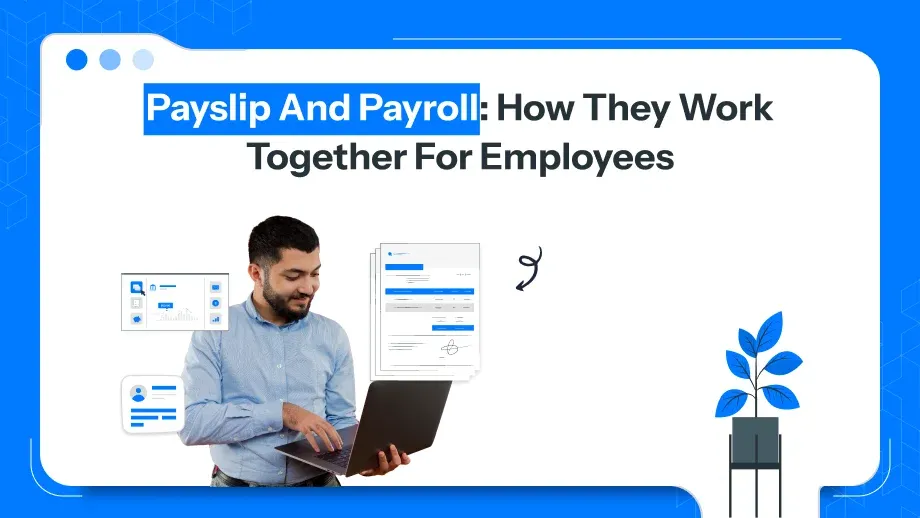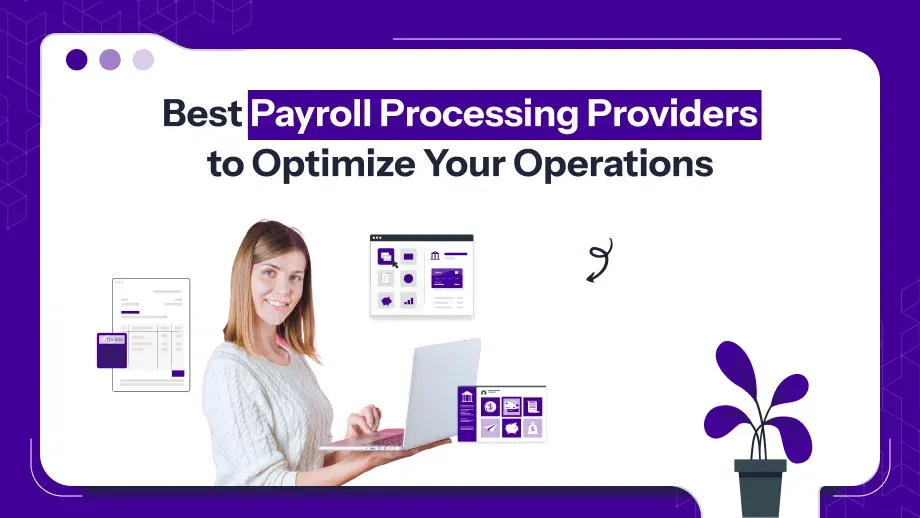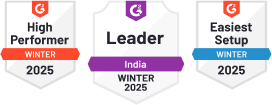
Key Features & Advantages of Payroll Management System Modules Understanding
Payroll administration is the most crucial responsibility of all in the hectic corporate world of today. One of an organization’s most delicate and intricate processes is payroll. It includes figuring out pay, tax deductions, overtime, bonuses, and labor law compliance. Thankfully, extensive payroll management system modules are now available thanks to contemporary technology, which can streamline, automate, and simplify these procedures. This blog article will provide a thorough explanation of the payroll management systems many modules, as well as an overview of its salient features and commercial benefits.
What is a Payroll Management System Modules?
A payroll management system is an automated software application designed to streamline an organization’s payroll process. It makes payroll-related procedures including taxes, deductions, benefits, allowances, and wages easier to manage. Payroll management systems integrate with a range of human resource management softwares (HRMS) to ensure regulatory compliance and provide workers with accurate, timely compensation.
To address various payroll processing requirements, a payroll management system often comprises many Payroll Management System Modules that are connected with one another. These modules improve the efficiency, transparency, and error-free nature of payroll management and may be tailored to meet the demands of particular organizations.
Key of Payroll Management System Modules
A set of modules that handle various payroll requirements form the foundation of a complete payroll administration software package. Let’s examine the main features and advantages of the payroll software modules that serve as the foundation for these systems.
1. Employee Information Management Module
Key Features:
-
Centralized Employee Database:
The module keeps all of the important employee data in one location, including job-specific information, employment history, and personal information like name, contact information, and marital status. Without the need for several data sources or spreadsheets, this integrated solution makes it simple for HR staff to keep accurate, current personnel records.
It includes both current and historical records, enabling easy tracking of an employee’s career path, promotions, and transfers within the organization.
-
Salary Structure and Compensation Tracking:
For each employee, detailed salary records are maintained, which include the base salary, bonuses, allowances (travel, food, housing), and deductions (taxes, provident fund, insurance). This module ensures that every component of compensation is tracked accurately, which is critical for correct payroll calculation.
-
Tax Information Management:
Fields for tax exemptions, filing statuses, and other deductions pertinent to individual employees, ensuring one is in compliance with local, state, or federal tax regulations.
All tax details of employees are safely stored and updated in real time, which would be easy to refer to during a payroll run or at year-end filing (for example, generating the Form 16, W-2).
Manages employee benefits including medical covers, pension schemes, retirement benefits, and other benefits the company may offer. Monitor any development in these schemes and ensure the Payroll Management System Modules is adjusted with additions or reduction as necessary.
-
Leave and Attendance Management:
The leave balances of employees pertaining to sick leave, annual leave, parental leave, etc., are followed, and every leave taken shall update the records automatically. Attendance data in terms of time clock-in/clock-out or absence is captured and used to create leave balances and salary.
Benefits:
HR personnel can swiftly and easily access the necessary data to carry out duties like payroll processing, performance evaluations, and regulatory compliance if all employee records are kept in one place.
Reduces human errors and increases the accuracy of pay roll calculations so that correct compensation packages are paid to the employees.
-
Time Efficiency for HR Teams:
The system automatically collects employee data and updates the same without manually entering the same and, thereby reducing the chances of old information.
Reduces administrative overhead by allowing HR to update employee information in real-time, which saves time when preparing payroll or responding to employee queries.
-
Improved Employee Experience:
A self-service site makes it simple for workers to access their personal data, boosting openness and confidence in HR procedures.
Employees may use this function to better manage their finances by viewing their pay structures, deductions, and perks.
Explore Payroll Management System Modules today and find the perfect solution for your business.
Start comparing top-rated modules and streamline your payroll process now!
2. Attendance and Time Tracking Module
Key Features:
It has the integration with biometric systems or time clocks, thus integrating sensibly with the system for real-time time tracking and monitoring. It would provide accurate and secure tracking of attendance by employees. Attendance of the employees would be done automatically, thus an error or fraudulent activities such as buddy punching could not occur.
The system is always monitoring and recording the actual time employees clock in and clock out, thus ensuring accurate logging of the hours worked. The data collected is used to calculate regular working hours, overtime, and other time-related payroll components.
Employees working beyond their standard hours (e.g., over 40 hours per week) are automatically flagged, and overtime hours are tracked in accordance with company policies or government labor laws. This ensures that employees are compensated fairly for any extra work, preventing issues with underpayment or employee dissatisfaction.
-
Holiday and Absence Management:
All absences (planned such as vacation, and unplanned like sick leaves) are recorded automatically, with all leave balance being deducted for them. Public holidays, company holidays, and leave days for individual employees are also included to keep the payroll correct.
Allows managers to input shift schedules for employees, basing them on workload, the availability of workers, and employee preferences. Different types of flexible shifts can be formed based on a specific need, such as split shifts, part-time hours, or night shifts. Payroll will capture all shifts.
Benefits
-
Enhanced Payroll Accuracy:
In real time, attendance information ensures that accurate hours worked by employees is paid for to avoid possible Payroll Software Company discrepancies.
This eliminates the possibility of errors arising from manual timekeeping systems, such as entering wrong hours worked or missing time records.
-
Improved Employee Accountability:
With the implementation of time tracking systems, employees are accountable for their attendance and thus accurate and verifiable attendance data.
This makes the workforce more disciplined because employees are well aware that their working hours are accurately recorded.
HR teams and managers can rapidly identify basic attendance patterns like tardiness or absenteeism and take needed corrective action such that productivity is maintained across teams.
With automated attendance tracking, managers waste less of their time on manual data entry and spend more time on performance management and team support.
-
Savings on overtime and absenteeism:
The system flags overtime automatically, enabling companies to manage labor costs effectively by keeping track of overtime work and ensuring it is approved beforehand.
Similarly, absenteeism data can be used to address issues and manage leave effectively, reducing unplanned absences that can disrupt operations.
3. Salary Calculation Module
Key Features:
-
Automated Salary Calculations:
Employee wages are determined by this module taking into account a number of factors, including base pay, incentives, allowances, and deductions. Based on working hours, it determines regular pay and overtime compensation. It also makes sure that all salary components are applied appropriately to provide accurate paychecks & Manage Payroll Software.
-
Customizable Salary Components:
Businesses can customize salary components for different employee types, including adding or removing allowances, performance bonuses, deductions for loans or salary advances, and other special considerations. This provides flexibility in how different employee categories (e.g., sales, management, support staff) are compensated.
-
Incorporation of Tax Deductions:
The system integrates with the tax management module to ensure correct tax deductions are applied automatically according to the applicable tax laws, including federal, state, and local taxes. This ensures that the tax status, exemptions, and deductions of employees are considered when calculating their net salary to ensure accurate and compliant tax processing.
-
Salary adjustments and benefits integration:
The pay computation automatically accounts for adjustments like increases, promotions, and deductions for unearned benefits. Salary estimates also take into account advantages like insurance payments, retirement contributions, and other benefits offered by the company.
Employees get pay stubs from the module that break down their gross pay, deductions, bonuses, and net pay. Every payroll cycle, pay stubs are automatically created and sent to employees via email or posted on the employee self-service site.
Benefits
-
Less Manual Errors in Payroll Processing:
The possibilities of human mistake in the payroll computation are lesser with automation. Employees have been paid without mistakes in most pay periods, hence leading to minimum disputes on payment. This complies with the labour as well as tax laws.
Accelerated payroll processing: It calculates payroll accounts automatically and with much reduced time. So, all the modules are completed immediately by the HR. Then payrolls can be released early.
With automatic salary adjustments, bonuses, and tax calculations, the payroll process is streamlined and requires minimal manual oversight.
-
Improved Employee Satisfaction:
Accurate and timely salary payments improve employee satisfaction, reducing concerns over underpayment, late payments, or errors in paychecks.
Detailed payslips help employees understand their compensation structure clearly, fostering a sense of transparency and trust.
Payroll teams can accommodate more employees without proportionally increasing time or labor costs since all the complex calculations and adjustments are taken care of automatically.
The reduction in administrative overhead saves businesses money in two ways: time and payroll module in hrms.
4. Tax Management Module
Key Features:
-
Automated Tax Deductions:
This module calculates the proper deductions for taxes based on the current income, tax status, and applicable exemptions for the individual. It covers all tax brackets, including state and federal rules and regulations. Tax calculations are calculated online, so tax amounts will never be under or overpaid every pay period.
-
Tax Form Generation (e.g. Form 16, W-2)
The system automatically and mandatory generates tax forms, such as Form 16 in India or W-2 in the USA, as is usually required by employees at year’s end to file their taxes. The automated generation of the report saves time for the HR department, but more importantly, it ensures compliance with tax regulations.
-
Periodic Tax Law Updates:
The system is linked with the current tax law information, which ensures that the tax rules, exemptions, and deductions are updated with the latest government policies. This minimizes the use of manual research and ensures companies stay compliant with changes in tax laws.
-
Tax Filing and Reporting:
The tax management module allows for smooth tax filing by preparing reports that can be submitted to the relevant tax authorities. This module further has the feature of generating detailed tax reports for internal auditing. Enables companies to meet tax deadlines in a smooth and accurate manner without the imposition of penalties for non-compliance.
-
Employee Tax Planning Tools:
It provides employees with tax planning tools like tracking their yearly tax liability and helping them make adjustments in their tax filings if needed. It also gives information on how the employees can reduce their tax liabilities through deductions and exemptions available to online payroll software.
Benefits:
makes sure companies adhere to local, state, and federal tax laws by automating the whole tax computation and filing process. This lowers the possibility of mistakes that might lead to fines.
-
Time-Saving Tax Reporting:
The automated generation of tax reports and forms saves significant time for HR departments during tax season, as they no longer need to manually compile and submit tax documents.
-
Employee Satisfaction and Transparency:
With proper tax deductions and timely reports, employees are confident in the fairness and accuracy of the payroll system. A transparent tax process induces trust among employees and the company.
-
Minimized Risk of Tax Penalties:
Update on tax law changes ensures that the system evolves according to regulations. Regular updates on tax law changes thus reduce the risk due to outdated or wrong tax filing.
Conclusion
Through the integration of several payroll management software modules, businesses may automate and optimize their payroll procedures, increasing their efficiency, reducing errors, and ensuring compliance with tax and regulatory requirements.
Every module provides unique features and advantages that improve the payroll process as a whole, guaranteeing that companies not only efficiently manage employee remuneration but also offer transparency, lower administrative expenses, and raise employee happiness. With payroll software solutions, companies will be able to stay ahead of payroll challenges while concentrating more on core business operations. Be it any type of HRMS & payroll software or manage Payroll Software, these advanced systems are quintessential to businesses seeking precision and efficiency in payroll management.






